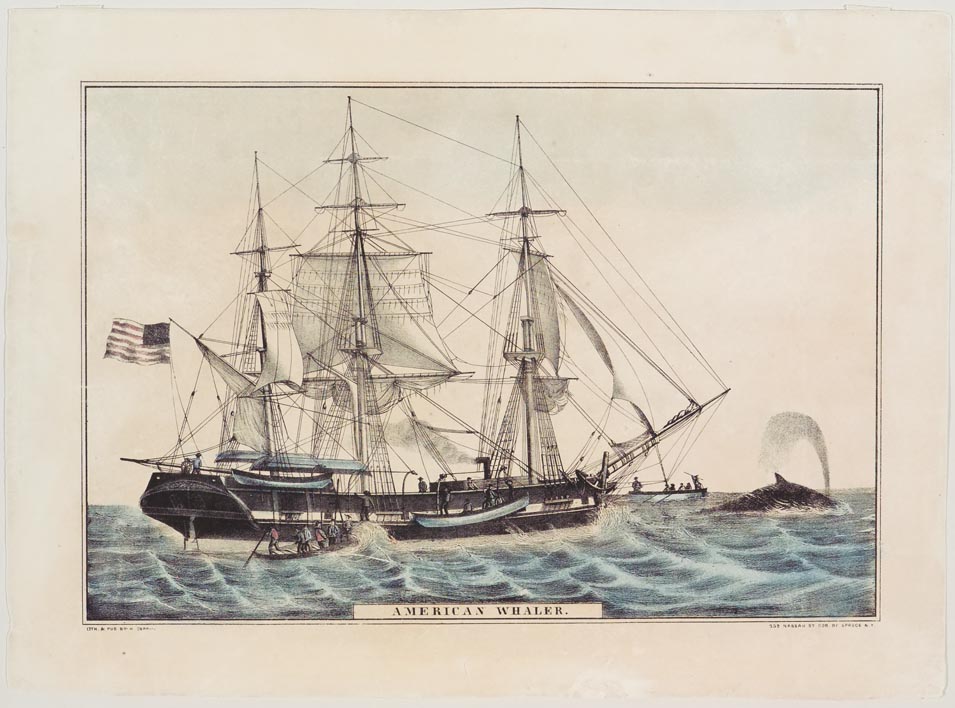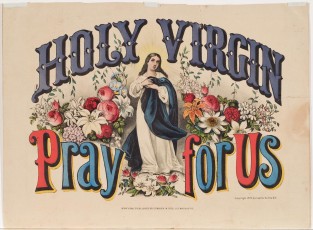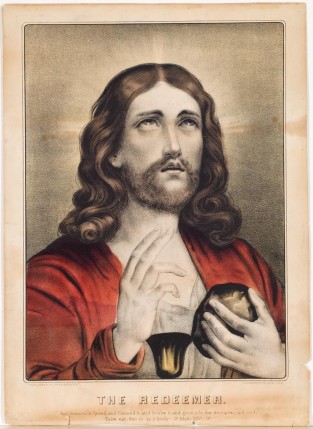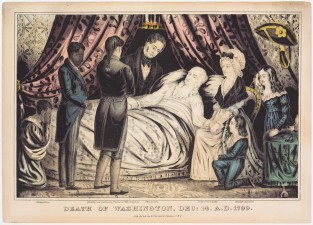Ship sailing to right in image. American flag off left end. Whale in water to right of ship.
Whale hunting was first established in the 1650s on Long Island, New York. When a whale was sighted, boats rowed out from the shore to capture it. If a whale was successfully killed it was towed to shore, flensed (blubber removed), and the blubber boiled in cauldrons known as trypots. Each whaling vessel employed 12-13 men, many of them Native American. Whale boats often traveled together as a precaution, in case one craft was damaged by an angry whale. In 1768, whale hunting increased, with more than 300 vessels sailing out of Massachusetts ports alone. This expansion was short-lived as the Revolutionary War brought the trade to a standstill. Whaling never returned to its former importance and by the late 19th century vessels sailed out of only four ports: New Bedford, Provincetown, San Francisco, and Boston. Boston left the trade in 1903, and San Francisco followed in 1921. New Bedford ports remained active for several years, launching the last whaler, the John R. Mantra, in 1927. Currier & Ives celebrated the 19th-century whaler ships through illustration, like the featured print, American Whaler.




